That Useful Wine Site
Search, or just roll your cursor over the colored boxes farther below.click the “x” to dismiss Search-results block.
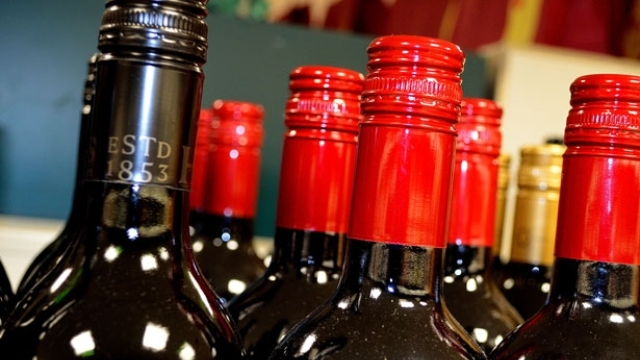
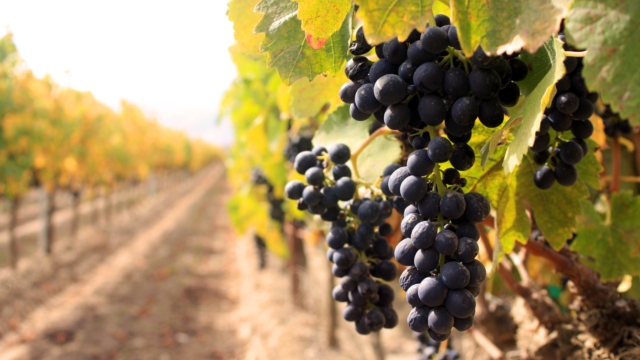
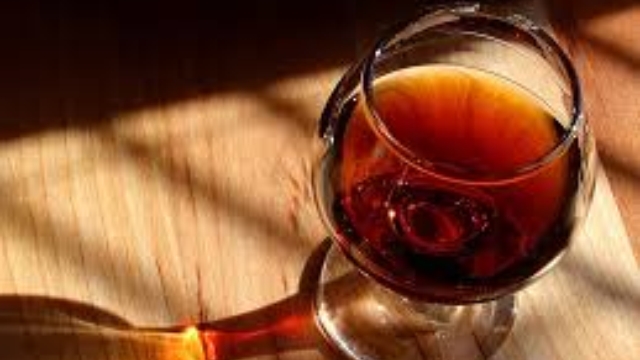
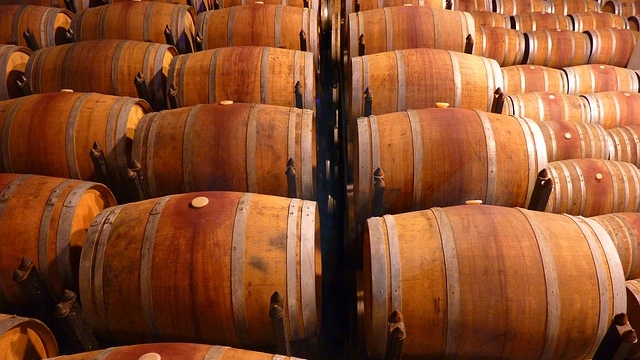
Advertisement:
Advertisement:
Quick page jumps:
(Synonyms: Agudelo, Agudillo, Anjou, Blanc d’Aunis, Capbreton Blanc, Franc Blanc, Gros Chenin, Gros Pineau, Pineau d’Anjou, Pineau de la Loire, Plant d’Anjou, Ronchalin, Rouchelein, Rouchelin, Steen)
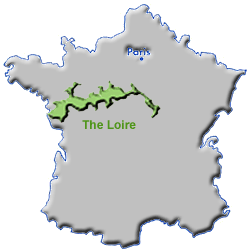
Chenin Blanc is a white-wine grape originating in the Loire Valley of France. It is a famously high-acid grape, and can make wines suitable for very extended bottle aging. It is now extensively grown in other areas, notably South Africa (where the grape and wine are called “Steen”) but also including the U.S. Indeed, it is today widely considered one of the dozen and a half or so “Noble wine grapes” of the world.
Chenin Blanc is, like another world-class white grape, Chardonnay, basically neutral in taste, and thus when well-vinified excels in conveying terroir, distinctive qualities that reflect the soil and climate in which the grapes were grown.
If Chenin Blanc vines are grown in a warm climate and encouraged, they will be immensely productive—but productive of bland, low-quality grapes. If, on the other hand, they are well restrained, they yield much less but of superb quality. For that reason, in earlier times, especially in the U.S., Chenin Blanc was widely grown to make vast qualtities of cheap, rather awful jug wine, and thus acquired here an apparently unshakeable reputation as a trivial, useless grape and wine. Yet in its home it is recognized as making some of the world’s very greatest wines. Little by very little, some awareness of that is now dripping into the American wine consciousness.
Chenin Blanc can be made in numerous ways; it is often used to make excellent dessert wines, but we will restrict our attention to Chenin Blancs vinified dry for table-wine use. But, though we say “dry”, there are (as with, for example, Rieslings) varying degrees of “table-wine dry”. In cool areas, the grape is sweet but high in acid and with a full-bodied, fruity palate, unless it fails to fully ripen, in which case it will be low in sugar and excessivly acid. (Nowadays, less-ripe grapes are made into sparkling wines such as Crémant de Loire.)
Descriptions of the nature of Chenin Blanc often include minerality, greengages, angelica (herb), and honey, as well as apple and quince. In the New World, where the wines are not expected to be aged much if at all, vinification tends to bring out tropical fruit notes such as banana, guava, pear, and pineapple.
In the Vouvray region, the grape is made into a like-named wine, Vouvray. Vouvrays, even the driest, tend toward accenting the honeyed aspect of the grape, even when they are not technically sweet at all. Vouvrays come in five classes:
Another French style is that of the Anjou region, where the wines are said to have more the flavors of quince and apples. And there is also Savennières Chenin, for which the tradition is aging in acacia or chestnut barrels. Savennières wines are probably the highest fully dry expression of Chenin Blanc, but one needs to understand their idiosyncracies. To quote one recent reviewer:
I think the dichotomy among reviews is based on reviewers’ expectations of Savennieres. True, it is Chenin Blanc, but it’s not Vouvray or Anjou or Montlouis. Savenniere, IMHO, just isn’t as friendly when young as the other Loire Chenin Blanc appellations…No, you are not going to get a nice pow of tropical fruit to go with your acidity. This is not a Huet Vouvray and it’s not a Chidaine Montlouis. But that’s what’s so beautiful about Chenin Blanc: There is no hiding between terroir and glass. What nature puts into the vineyard is what you get out.
Some Savennières producers recommend aerating their wines for as much as 48 hours before serving them. That’s probably extreme, especially for young bottles, but bottle age brings up another point: as another reviewer said, most Savennieres is almost undrinkable without considerable age, like 20 years. Or drink them very young before they shut down around year 5. That is so because, like not a few ageworthy wines, Chenin Blancs experience what is commonly called a “dumb period”; to quote the WineAnorak column:
A wine that is closed is, in simple terms, one that doesn’t smell much. Many fine wines go through a ‘closed’ or ‘dumb’ period as part of their development, a period that may last for some years. Typically a wine destined for long life will show well for a couple of years and then close down for some 5-10 years, before developing the tertiary bouquet that is so highly prized in geek circles.
So pay attention to the vintage year of any Savennières you are contemplating buying and drinking soon after.
Factoid: dessert-style Chenin Blancs are said to be able to take a full century of bottle aging.
• This wine’s Wine Searcher “Reviews” page.
• This wine’s CellarTracker review pages.
• Retail offers of this wine listed by Wine Searcher.
• Retail offers of this wine listed by 1000 Corks.
• This wine’s Wine Searcher “Reviews” page.
• This wine’s CellarTracker review pages.
• Retail offers of this wine listed by Wine Searcher.
• Retail offers of this wine listed by 1000 Corks.
• This wine’s Wine Searcher “Reviews” page.
• This wine’s CellarTracker review pages.
• Retail offers of this wine listed by Wine Searcher.
• Retail offers of this wine listed by 1000 Corks.
• This wine’s Wine Searcher “Reviews” page.
CellarTracker has two separate listings for this wine:
• This wine’s CellarTracker review pages.
• This wine’s CellarTracker review pages.
• Retail offers of this wine listed by Wine Searcher.
• Retail offers of this wine listed by 1000 Corks.
• This wine’s Wine Searcher “Reviews” page.
• This wine’s CellarTracker review pages.
• Retail offers of this wine listed by Wine Searcher.
• Retail offers of this wine listed by 1000 Corks.
One can certainly find high-quality Chenin Blancs that are widely available. But even though this is “splurge” spending we are talking about, it seemed to us that the going prices for those Chenins that might be materially better than anything in the lists above are just too high for a splurge by anyone interested in this site (more definitely, prices that begin at $70, $80, or $90 we just ruled out).
Advertisement:
Advertisement:
|
|
This site is one of The Owlcroft Company family of web sites. Please click on the link (or the owl) to see a menu of our other diverse user-friendly, helpful sites. |
|
| (Note: All Owlcroft systems run on Ubuntu Linux and we heartily recommend it to everyone—click on the link for more information). | ||
|
All content copyright © 2024 The Owlcroft Company
(excepting quoted material, which is believed to be Fair Use). |
This web page is strictly compliant with the W3C (World Wide Web Consortium) Extensible HyperText Markup Language (XHTML) Protocol v1.0 (Transitional) and the W3C Cascading Style Sheets (CSS) Protocol v3 — because we care about interoperability. Click on the logos below to test us!
This page was last modified on Saturday, 30 October 2021, at 11:26 pm Pacific Time.
Some Descriptions of Chenin Blanc Wines
“The aromas and flavor notes of Chenin blanc often include the descriptors of minerally, greengage, angelica and honey. Chenin wines produced from noble rot will often have notes of peaches and honey that develop into barley sugar, marzipan, and quince as they age. Dry or semi-sweet Chenin blanc from the Loire will often have notes apple, greengage, and chalky minerals that develop into more honey, acacia, and quince aromas. New World styles of Chenin, such as those of South Africa, are more often made to be consume young and exhibit rich tropical fruit notes such as banana, guava, pear, and pineapple. The alcohol level for dessert styles Chenin rarely goes above 12%, which keeps the wines more in balance. Drier styles of Chenin are more likely to be around 13.5%.”
“Chenin Blanc is extremely versatile and can be produced in a wide range of styles, from bone dry to rather sweet. In that way, it could be said to resemble Riesling, another quite flexible grape. (It’s also the source of some nice sparkling wines, particularly from the Vouvray region of the Loire.) The wines vary from neutral and thin with high acidity (particularly when the grape is over cropped) to minerally, even chalky, with the intensity and longevity of a great Chablis. The aromas of Chenin range from spicy to citrusy to floral and even tropical, depending on the place where it’s grown as well as the viticultural and vinification techniques.”
“Chenin Blanc has a wide range of flavors. Part of the reason for this has a lot to do with the winemaking style. Winemakers in the original growing region for Chenin Blanc in France stop the fermentation before all the sugar is used up. This technique has some benefits: it reduces the resulting alcohol level, makes the wine sweet and increases the wines’ ability to be aged. The Quarts de Chaume AOC in the Loire is famous for some of the sweetest and longest lived Chenin Blancs in the world…Chenin Blanc is also available dry. If you’re buying French Chenin Blanc, look for the words Sec on the label. If you buy a South African Chenin Blanc, you’ll find the more affordable versions are produced in a zesty dry style, whereas the higher quality versions are slightly oaked (and a tiny bit sweet).
“Careful viticultural practices to reduce crop size and prevent sunburn can overcome chenin blanc’s weaknesses and reward the effort with distinctive and excellent wines. Nearly all the truly memorable Chenin Blancs are French, from Saumur and Savennières (very dry), Anjou and Vouvray (off-dry), Coteaux du Layon and Quarts de Chaume (dessert), and Crémant de Loire (sparkling). No matter the style, a certain floral, honeyed character, along with zesty acidity are the sensory trademarks of well-made Chenin Blanc. When conditions are right, Botrytis cinerea adds additional complexity and intensity.”
“A truly great Chenin Blanc is typically a Moelleux, the product of a hazy autumn on the schists of the Loire which encourages noble rot and results in a toasty golden wine that has all of the complexity of any botrytised wine but with the Chenin grapes’ particular layers of molten honey and crisp, dancing acidity…Bonnezeaux, Coteaux de l’Aubance, Coteaux du Layon, Montlouis, Quarts de Chaume and, especially, Vouvray are all likely appellations for [Moelleux], with Vouvray and Quarts de Chaume producing some of the most intense examples. On the other hand, Vouvray is such a large and varied appellation that the name can also be found on bottles of extremely lacklustre wines whose only attributes are a certain sweetness and a certain acidity and nothing in the middle to knit them together…But there are fine dry (Sec) Loire Chenin Blancs too, most famously Savennières, a tiny appellation famous for making stern whites that can take a decade to be approachable but have so much mineral extract that they can make great partners for quite flavourful foods. Jasnières and Anjou are both names that can be found on bottles of serious dry Chenin Blanc too (although Anjou is another very varied appellation).”
“Chenin Blancs may be the ultimate sweet-and-sour wine, as they tend to lead with sharp, crisp, acidic flavors primarily in the form of citrus fruits: pineapple, Meyer lemon, even something akin to watermelon rind. But those sour flavors are undercut with a delicate honeyed sweetness. You may get some spicy flavors of cinnamon and pepper on your tongue and you might also get a big mouthful of smoke, which is often the by-product of the wine aging in the charred lining of newer oak barrels, which some producers use to temper the acidity of the wine. This oaking can also lead to a creaminess in the mouth, as malolactic fermentation converts the more sour malic acids into softer, creamier lactic acids.”